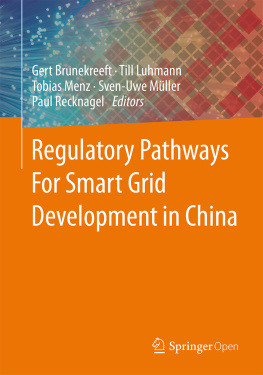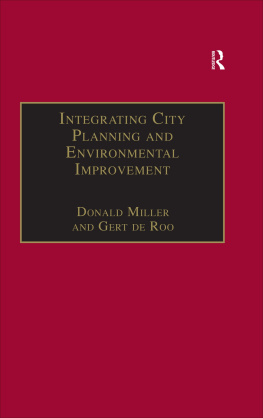1. Introduction
Smart grids an innovative solution for upgrading the conventional power grid infrastructure
Around the world, power grid operators have to cope with several technological challenges ranging from aging grid infrastructures and fluctuating load levels to the integration of intermittent
Several modern technologies have been or are currently being developed which are aimed at reducing investments in the traditional grid infrastructure by increasing operational efficiency, making it possible to fully utilize the capacity of the existing power grid infrastructure and leveraging flexibilities in electricity generation and consumption.
Examples of such innovations designed to upgrade electric power grids are modern information and communication technologies as well as advanced power grid components for metering, measurement and control, and automation. Power grids incorporating these new technologies are commonly referred to as smart grids [1].
Smart grid technologies open up many new possibilities in power grid management and control, e.g. the status of distribution grids can be monitored in real-time when sensoring and communication networks are added. With the help of the information gathered, modern automation and control technologies can be employed to supervise and actively control grids increasing their utilization rate and preventing overloads via grid capacity management [1]. Thus, the need for costly grid expansion may be reduced while the stability of the grid and security of supply can be improved [1].
Challenges to Chinas current electric power system
China faces tremendous challenges with regard to the development of its electric power system. According to Chinas th Five-Year Plan for Energy Development , massive investments in power generation and grid capacities have to be made to cope with the steadily rising power consumption [2].
Different sources point to a low level of equipment sophistication in parts of the electric power grid in China, especially at the distribution grid level. In some instances, outdated and inefficient distribution transformers are still in operation [3], [4]. This contributes to a considerable number of supply interruptions, despite the fact that significant advancements have been made in recent years. At the same time, requirements of Chinas quickly modernizing industry with regard to power quality are on the rise and cannot be met at all times [5].
China has to cope with increasing air pollution problems [6] and is the worlds largest emitter of carbon dioxide (CO2) [7]. Its power generation sector, which is mainly relying on coal as an energy resource, is responsible for a large share of CO2 emissions.
Government targets for Chinas future electric power system
In light of these challenges, the Chinese government issued specific targets for the physical and technological development of the power system up to 2015: power generation capacities are to increase from 970 gigawatts (GW) in 2010 to 1,490GW in 2015 [2] and they are projected to attain 1,935GW in 2020 [8]. Also, the share of power generation from RES and nuclear energy is planned to be increased significantly, with an official target of 11.4% of total primary energy coming from non-fossil sources by 2015 and 15% by 2020 [9]. In China, power generation from RES is considered a key instrument to reduce the dependency on coal power, stop the deterioration of air quality, and reduce the growth rate of CO2 emissions [9]. The State Council also stipulated that long-distance, inter-regional and inter-provincial transmission of electricity shall be promoted in order to build a nationally integrated backbone grid. In addition, urban and rural distribution grids are planned to be expanded and renovated [2]. Investments in the grid infrastructure are projected to reduce power supply interruptions and to increase power quality. Considering the power consumption side, there are plans to significantly increase the efficiency of power use and to provide access to electric power even in very remote regions of China by 2015 [2], [10].
Chinas government also plans to make considerable advancements on the organizational level: a modern energy market system is to be established, market-related reforms in key energy sectors are projected to take place, energy pricing mechanisms are to be improved, and the development towards an internationally competitive environmental and energy industry is to be accelerated [2].
To support accomplishment of the government targets for Chinas future electric power system, the government aims at starting to build up smart grids during the next several years. As has been formulated in the th Five-Year Plan for Energy Development , Chinas government aims at promoting the development of smart grids [2]. Also, the Chinese Ministry of Science and Technology (MOST) released a special plan for technological smart grid improvements in 2012 [11].
Barriers to the implementation of smart grids in China
Some aspects of Chinas technological and regulatory framework may present obstacles to an effective and efficient smart grid development:
Overlapping responsibilities between different government institutions affect the governments ability to guide and facilitate the development of smart grids [5] [12].
Compared to the electricity sectors in other countries, the i nformation and communication technology (ICT) industry, small-sized power generation companies, and other non-established players like prosumers are underrepresented in (smart) grid development planning in China.
Due to rather low electricity prices, the current tariff system may not offer sufficient incentives for saving electricity or for shifting electricity demands according to available generation and grid capacities [12].
A lack of sufficient incentives for grid integration of RES within the existing regulatory framework persists [13].
Similar to all other countries aiming at developing smart grids, some of the key smart grid technologies in China are not yet fully developed and some equipment specifications and standards are still inconsistent [3], [4], [14].
Idea of the study
The aim of the present study is to analyze and discuss regulatory policies supporting the build-up of smart grids in China. The work is based on experiences gathered in Germany and other countries. In the context of the study, the term regulation is not restricted to purely regulatory issues. Rather, government policies such as the promotion of research and development (R&D) or standardization issues are also included.
Smart grids follow an evolutionary pathway and their realization depends on the status quo of the existing grid infrastructure. Therefore, this study contains a detailed description of Chinas and Germanys electric power systems, their most pressing technological challenges, and their regulatory environments. Based on these descriptions, both countries specific technological views on smart grids are presented.











